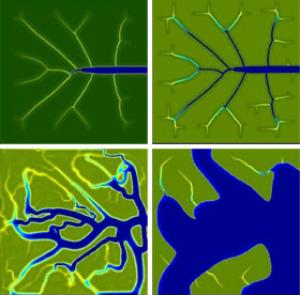Coastal marshes are easily adapted to sea level rise
A recent study from Duke University in the United States found that coastal marshes, where marine organisms are raised and mitigating the effects of storms along many coasts, can be adapted to accommodate the increase in sea level if the vegetation of these marshes is not destroyed and the supply from the upstream is not reduced.
Such marshes would "serve as very useful buffers before coastal storms to cities like New Orleans that are divided with the Gulf of Mexico by the marshes ." That's the content Matthew Kirwan and A. Brad Murray wrote in a report published in the Journal of Methods of the National Academy of Sciences (USA) issued on March 26.
Duke University researchers have created a three-dimensional model based on the results of recent studies that have suggested that marine marshes are potentially implicated in adapting to environmental changes. school However, Duke's model has further suggested that interfering with the lives of wetland plants or depriving them of sediment supplies could disrupt this equilibrium.

The experimental model shows that an unaffected swamp can change a little when the sea level rises from 1 meter a year (top left) to 10 meters a year (top right). the number of plants (bottom left) or 5% of the trees in the marsh along with a decrease in the suitable supply (right below) will produce significant changes with an average annual sea level rise of 10 millimeters (Photo : Duke University)
According to the researchers, the coastal water systems and tidal waters also provide a highly fertile habitat and they serve as nurseries for many crustaceans. important commercially '.
Murray - Associate Professor at Duke University's Earth Science and Environment University. Kirwan, the first author of the report, is a graduate student working with Associate Professor Murray.
Despite these capabilities, according to the researchers, many types of environmental changes are often related to humans such as rising sea levels, land subsidence and changes in soil and sediment supply for Trees in the swamp are 'affecting coastal wetlands around the globe.'
The team's model is based in part on fieldwork conducted in South Carolina and has been compared with observations in swamps in the states of Louisiana, Massachusetts and British Columbia. This model has used computerized mathematical equations to help researchers evaluate the development of the marshes shape and the ecological diversity of the marshes.
Other research groups have come up with similar problems, but according to Murray, the Duke version has emphasized how biology affects and interacts with erosion processes.
The model describes how the vegetation and silt have joined together to create a living "ground" that can adapt to changes in water levels. It also takes into account how tidal creeks and waterways together provide silt and sand for growing areas or how they reverse this process.
According to a new report, 'With a moderate rise in sea level, this model will build a swamp and canal network capable of rising with rising speed. of sea level. This means that the depth of the water level and the temporary biological reproduction are fixed. '
Murry explains: 'If the vegetation is still intact it will make the whole system work well and help improve sedimentation and minimize erosion. In the case of a slightly higher sea level, this system will continue to remain due to that vegetation. '
But the model also shows that destroying vegetation or reducing sediment supply will cause water levels to rise . This change will be aggravated once the rise in sea level increases.
Murray said: "These changes will create a terrifying durable equilibrium. In this state, all conditions tend to become an open river basin so it will become too deep for all. all the trees to turn around. '
He added: 'In our opinion, that may be the reason why the swamps in the Chesapeake Bay and in Louisiana are getting worse. That's because these two places are quite high places of sea level rise and because the change of land use purpose has reduced the rate of sediment deposition into the downstream area. '
Such changes in land use purposes include damming rivers and afforestation in bare lands.
In fact, this study has shown that the loss of a huge volume of deforestation in the destruction of the forest during the US colonial period created favorable conditions for the formation of marshes. extensive along the east coast.
This research was funded by the National Science Foundation and the Andrew W. Mellon Foundation.
The Kiet
- Cuba may lose 10,000 houses due to sea level rise
- Solution to prevent sea level rise
- Sea level rises record in 2013
- The Mekong Delta risks being submerged under the sea
- A designer has found a way to turn a wave breaker into a mangrove forest
- Sea level rise threatens more than 180 cities in the United States
- Discover the mystery of sea level rise
- Cat Ba biosphere reserve area is
- New findings on the leading cause of sea level rise
- Sea level will rise by 20m if the Earth's ice melts
- Seawater is rising at an unprecedented speed
- Safely protect the Earth's green carbon source
 Is the magnetic North Pole shift dangerous to humanity?
Is the magnetic North Pole shift dangerous to humanity? Washington legalizes the recycling of human bodies into fertilizer
Washington legalizes the recycling of human bodies into fertilizer Lightning stone - the mysterious guest
Lightning stone - the mysterious guest Stunned by the mysterious sunset, strange appearance
Stunned by the mysterious sunset, strange appearance